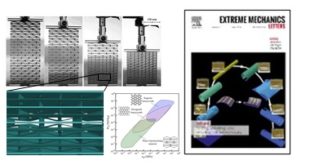Open source software is free to license, the preferred choice of geeks everywhere, for rapid development for instance impromptu mapping projects to help victims of the 2010 Haiti Earthquake where open source delivered results much faster than traditional methods. “It probably would have taken a year to come up with a product to do that,” Kane McLean, co-chair of Open Source for America and a member of the steering committee for Mil-OSS, a community of civilian and military open source software developers said.
Open source software also plays a role in drone research and development. In December, researchers at Camp Shelby in Mississippi demonstrated a collaborative Open Source Unmanned Remote and Autonomous Vehicle Systems (OS-URAVS) program, showcasing how work can be shared among the U.S. Army, Navy, Air Force, Department of Homeland Security and Defense Acquisition University to create a common framework and standards for developing and grading drone software.
The military uses open source both in mission-critical software deployments and in its development practices. For instance, the Defense Advanced Research Projects Agency (DARPA) routinely employs crowdsourcing to find new ideas, and recently published an open catalog of its projects.
Increased productivity is one of the many benefits that open source software brings to defence departments. There are the advantages of better security, lower costs, rapid development, no vendor lock-in, and so on. Open source adoption is high in the military because it’s hard to beat from a strategic and efficiency standpoint, says Kane McLean.
Apart from the cost, there are two other factors that influence a military’s decision to opt for open source code. First, technology outside the military system simply advances faster than technology within it. By using open source tools, the defence department can adopt those advances almost as soon as the code hits the Web, without going through the extra stage of the procurement process. Second, open source software is more secure than closed source software, by its very nature. The code is continuously scrutinised by countless users across the world and any weaknesses are flagged, shared and fixed immediately.
Open-source software frameworks offer a wealth of opportunities to improve military tracking capabilities. There have been several technological advances in this area, notably tied to machine learning and artificial intelligence (AI). For example, Cambridge Pixel in November 2016 introduced software modelling algorithms capable of supporting radar detection and tracking of small targets in naval and air surveillance radar applications.
The model-based tracking extensions enable the operator to create several models that match the signature of likely small and weak targets such as a swimmer or crawler, rigid inflatable boat, jet ski, helicopter, small unmanned aerial vehicle (UAV) or a motorcycle, according to the company.
Users also can configure the tracker to look for scenarios like targets moving towards a sensitive location or on a specific heading. The tracking software enables users to acquire several types of targets from the same data set.
Cambridge Pixel’s SPx radar tracking software is designed to operate with many different radar types and already is widely deployed in command and control, maritime navigation, security, airports, and vessel traffic applications.
The software receives radar video as either radar signals through an acquisition card. Radar processes the video to attenuate noise and clutter, extracts target-like detections as plots, and then correlates the plots to identify targets for automatic acquisition.
Cambridge Pixel’s SPx radar tracker provides target track identification, heading and speed. It is parameterized, configurable and supports multi-hypothesis tracking to improve tracking efficiency and reduce nuisance alarms.
Dstl develops open-source framework to enhance military tracking technology
The UK’s Defence Science and Technology Laboratory (Dstl) announced on 14 May the launch of an open-source software framework named Stone Soup, which is intended to help improve military tracking technology.
Even though tracking enemy missiles, vehicles or drones is essential for operational effectiveness, algorithms that process the data are complex and difficult to compare. The algorithms can now be compared side-by-side against realistic data using the new software framework.
According to Dstl, the initiative aims to provide better tracking capabilities for a range of difficult problems including following a swarm of small fast-moving unmanned aerial vehicles (UAVs), predicting the movements of vessels, and tracking space clutter around the International Space Station.
The software architecture of the framework has six component types: algorithms, framework, data, metrics, simulators, and sensor models. It enables code components including algorithms, sensor models, and simulators to be plugged-in in a modular way, Dstl said in a press release.
The software framework will help users to model a large number of outcomes and assess how they improve factors such as safety, survivability, or operational effectiveness of a tracking system. It will also enable developers or tracking specialists to contribute to the framework by inserting new components and comparing these with the latest algorithms to help industry and government research centres to assess them against standard data sets. The industry can also use the framework to run its own data against the standard suite of tracking algorithms it contains, according to Dstl.
The project was led by Dstl across the ‘five eyes’ countries: Australia, Canada, New Zealand, the UK, and the US.
“The framework is in its infancy but the long-term aim is to save lives by having data that can accurately track adversaries, giving commanders in the battlefield full situational awareness.” Dstl senior principal scientist Professor Paul Thomas said in a press release on 14 May, “It’s an accelerated learning aid for people who are just coming into this area too. Before this, it could have taken months, even years, to learn the detailed mathematics of tracking.”
References and resources also include:
https://www.govtech.com/computing/Open-Source-Catching-on-in-Government.html
 International Defense Security & Technology Your trusted Source for News, Research and Analysis
International Defense Security & Technology Your trusted Source for News, Research and Analysis

